Final Learning Summary: My Crochet Project
This learning summary showcases the journey I undertook during this course to explore and develop a new skill: crocheting. Starting with only a basic understanding of single crochet, I used a variety of online resources—like video tutorials, blogs, books and apps—along with guidance from my teacher and feedback from classmates to deepen my learning. Throughout the process, I documented my progress, reflected on challenges, and celebrated milestones. What follows is a collection of key moments, reflections, and takeaways from this hands-on, creative learning experience.
Week 1 A Glimpse at my learning Adventure. Crochet Garden; Growing with Yarn !
This week, I reflected on my motivation and set goals for my learning project. I decided to learn how to crochet, inspired by past experiences with crafts and fond memories of my grandmother crocheting. I’m combining this with my love for plants by planning to make a crochet snake plant.
to learn how to crochet, inspired by past experiences with crafts and fond memories of my grandmother crocheting. I’m combining this with my love for plants by planning to make a crochet snake plant.
I also began learning how to blog for the first time. I see blogging as a chance to share my journey, get feedback, and connect with others.
Key Takeaways:
- Chose crochet as my new skill
- Set the goal of making a crochet snake plant
- Planned to use YouTube tutorials(The Woobles ), crochet blogs and blogs for guidance
- Started exploring blogging to document learning and reflect week
Week 2 Exploring the Basics of Crochet, My journey with Yarn and Stitches
This week, I began learning the fundamentals of crochet, an art form that uses a hooked tool and yarn to create fabric. I started by gathering basic tools: a crochet hook and yarn. I learned several Techniques like : Holding the yarn and hook (Knife Grip)
(Knife Grip)
- Slip Knot
- Yarn Over (YO)
- Starting Chain
- Working into the Chain
- Single Crochet (SC)
- Turning the Work
- Working in Row 2
- Fastening Off
- Slip Stitch
Week 3 Snake Plant Crochet: Leaf Creation & Learning Reflections This week, I focused on making the leaves for my crochet snake plant. I made small,  medium, and large leaves for my crochet snake plant, challenging myself by creating all the different types for added character. Here are the techniques I learned this week:
medium, and large leaves for my crochet snake plant, challenging myself by creating all the different types for added character. Here are the techniques I learned this week:
- Practicing Stitch Tension
- Size and Shape Matching
- Following a Crochet Pattern
- Stitch Counting
- Crocheting Small, Medium, and Large Leaves
Week 4 Completing the Shape and Detailing of Snake Plant Leaves 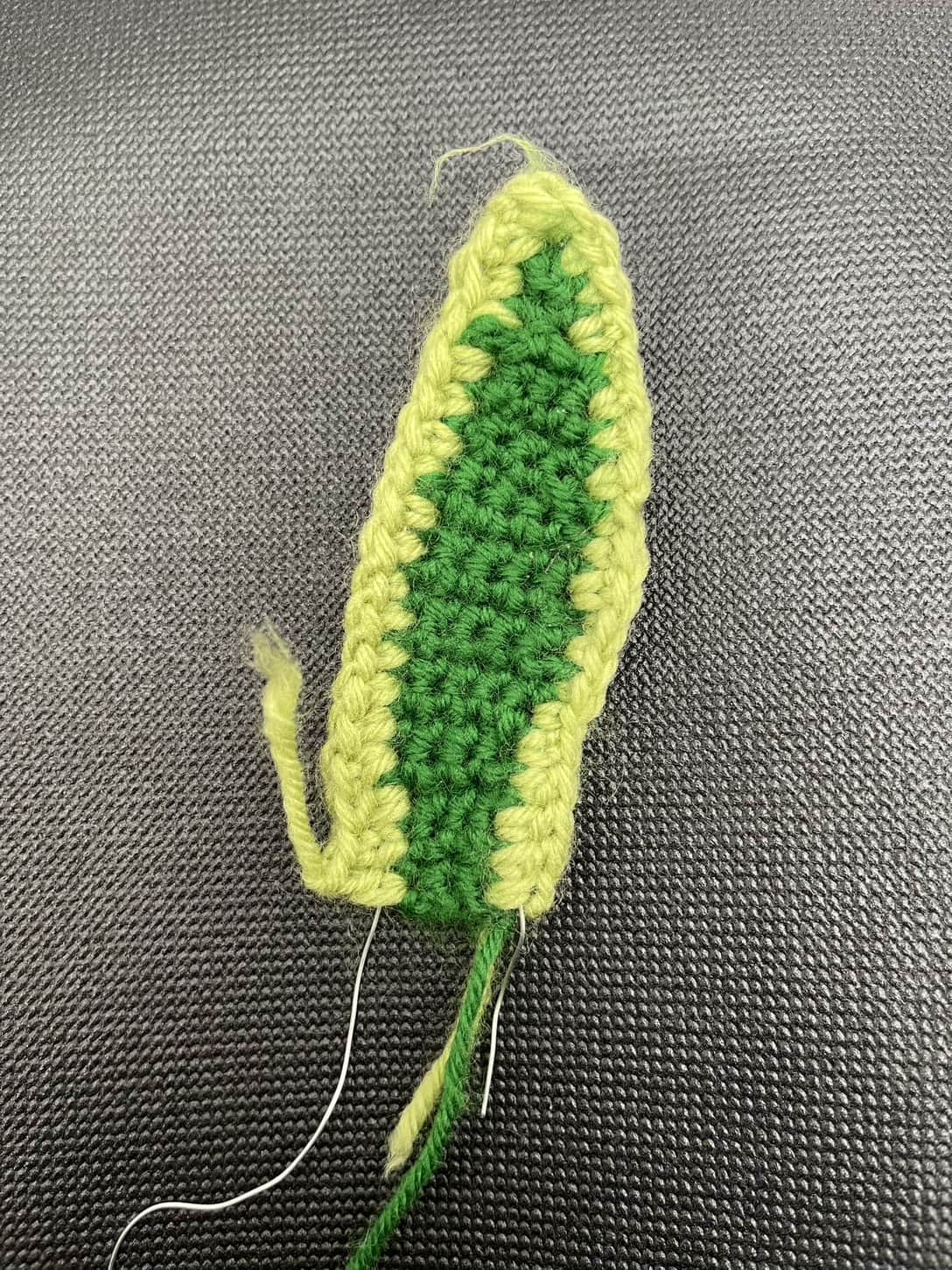 This week, I worked on wiring my crochet snake plant leaves by cutting wires for different sizes and adding neat borders using corner stitches to ensure clean edges. I initially struggled with managing the wire and yarn, but after finding a more detailed tutorial, my edges turned out cleaner.
This week, I worked on wiring my crochet snake plant leaves by cutting wires for different sizes and adding neat borders using corner stitches to ensure clean edges. I initially struggled with managing the wire and yarn, but after finding a more detailed tutorial, my edges turned out cleaner.
Week 5 Crocheting the Base of the Pot: Overcoming Challenges This week, I worked on the base of my crochet pot, starting with the magic ring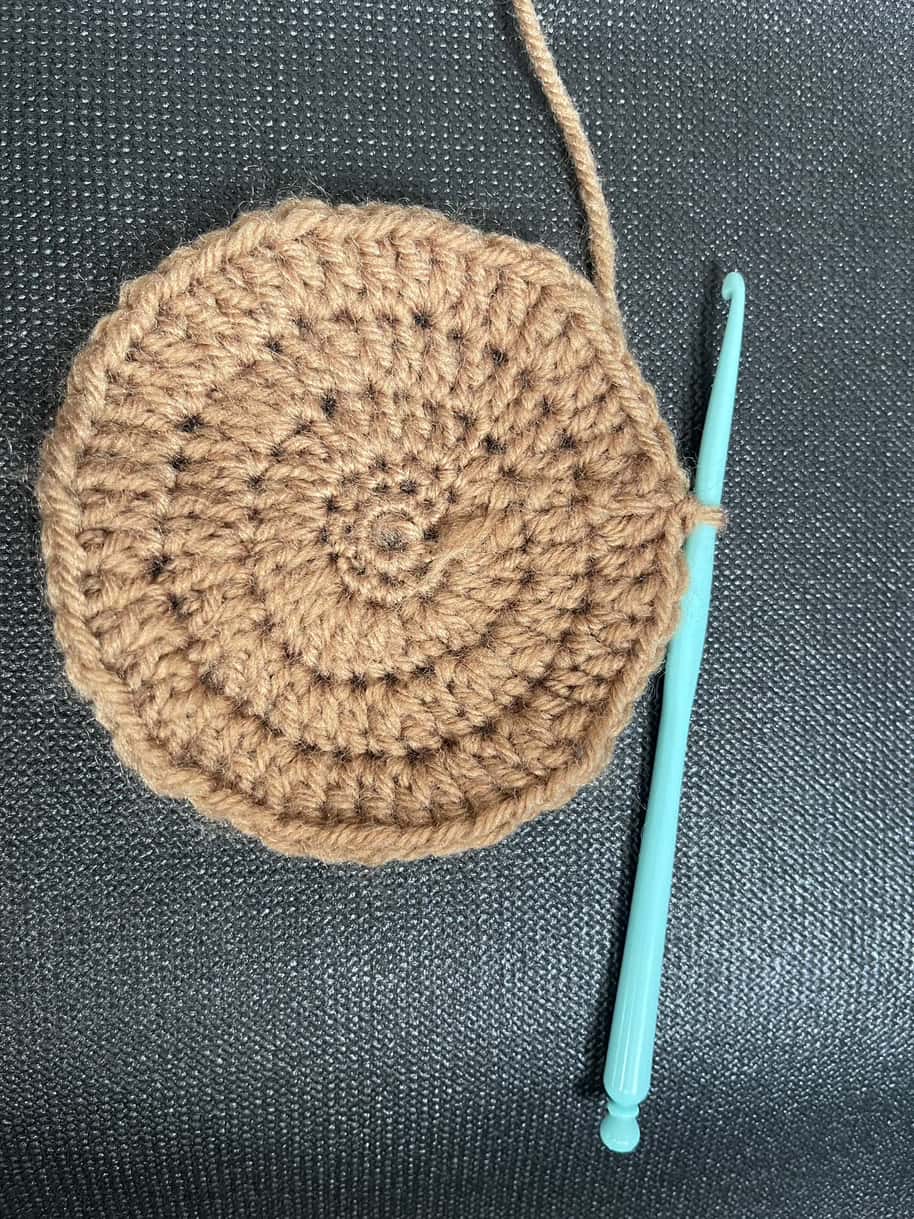 technique. Initially, I used a piece of white yarn as a stitch marker, but it was tedious, so I switched to a bobby pin. The base kept curling, so I explored different tutorials, adjusting my stitch count and switching from single crochet (SC) to double crochet (DC). These changes finally helped me create a flat base. Through trial and error, I learned the importance of patience, problem-solving, and adjusting techniques. I found the best tutorial that provided clear, detailed instructions, helping me resolve my issues.
technique. Initially, I used a piece of white yarn as a stitch marker, but it was tedious, so I switched to a bobby pin. The base kept curling, so I explored different tutorials, adjusting my stitch count and switching from single crochet (SC) to double crochet (DC). These changes finally helped me create a flat base. Through trial and error, I learned the importance of patience, problem-solving, and adjusting techniques. I found the best tutorial that provided clear, detailed instructions, helping me resolve my issues.
Week 6 Pot for my Snake Plant This week, I focused on completing the crochet pot for my snake plant. After exploring various resources, I found a pattern that worked and used a mix of YouTube tutorials, blogs, and the Whimsical Stitches e-book to guide me.
various resources, I found a pattern that worked and used a mix of YouTube tutorials, blogs, and the Whimsical Stitches e-book to guide me.
The main challenge was shaping the pot and maintaining consistent tension. Through trial and error, I adjusted stitch counts and techniques to fix sizing issues. To personalize the pot, I added a second yarn color for a two-toned look, adding contrast and texture.
Week 7 Assembling the Snake plant
This week, I completed my crochet snake plant by making the dirt, stuffing the pot, and assembling the leaves.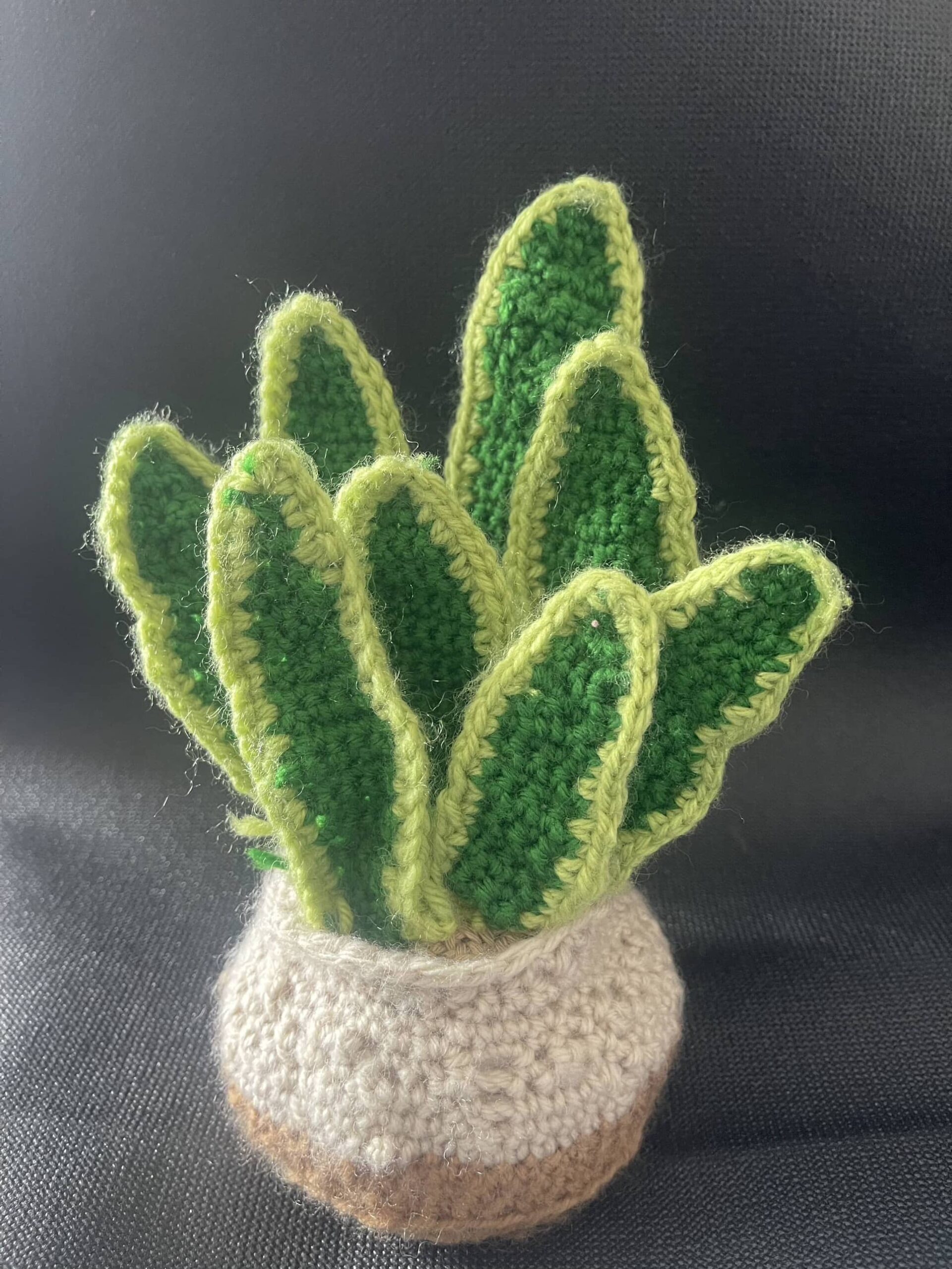
For the dirt, I crocheted a circular base, adjusting stitch counts until it fit well. I added a cardboard base and fiberfill to keep the pot sturdy. Then, I attached the leaves—some reinforced with wire for support—arranging them for a natural look.
I learned how important structure is in crochet, and how small changes, like more stuffing or stitch tweaks, can improve the result. A blogger’s diagrams and photos made the assembly process much easier to follow.
Week 8 Crocheting a Floral Coaster: A New and Exciting Project
This week, I crocheted a floral coaster after getting inspired during breakfast. I followed a YouTube tutorial and used violet and green yarn to make the flower. The pattern was tricky at first, especially with stitch increases, but I figured it out after rewatching the video.
It was my first time making crochet flowers, and I loved shaping the petals. I even made a quick video using CapCut—my baby’s background noise included!
The project boosted my confidence and made me excited to try more floral designs.
Week 9 Crocheting a Rose: Bringing Floral Beauty to Life
This week, I was inspired by a beautiful crocheted rose I saw on Instagram and decided to make one myself. I used deep red yarn for the petals, starting with a magic ring and increasing stitches to create layered, realistic petals. For the leaves, I tried triple crochet for the first time and added floral wire for shape and flexibility.
The project pushed me to explore new techniques and textures, and I loved how the rose began to take shape. I followed a clear video tutorial for the petals and a detailed blog for the leaves, which helped guide me through the process.
This has been one of my most rewarding crochet experiences yet!
Week 10 Overcoming Challenges in Crocheting Sepals and Assembling My Rose
Crocheting flowers can be beautiful but challenging—especially the sepals and assembly. This week, I struggled with the sepals at first, trying multiple tutorials until I found one with clear steps that finally worked. I was proud of myself for not giving up.
Assembling the rose tested my patience. I created the stem by wrapping yarn around wire and attaching the leaves. I initially glued the first petal, but the residue looked messy, so I switched to stitching the rest. In my focus, I forgot to add the sepals! Since the first petal was glued, I couldn’t remove it, but I managed to unwrap the stem, add the sepals, and reattach the petals.
This experience taught me the value of patience, planning, and choosing stitching over glue for a cleaner finish. Mistakes happened—but I adapted and ended up with a result I’m proud of.
What Contributed to My Learning
Several factors played an important role in my crochet learning journey. This course gave me the motivation and space to explore a new skill, and the flexibility to use different online resources like YouTube and crochet blogs made it easier to find guidance that worked for me. When I faced challenges, switching between tutorials and trying again helped me understand better. Supportive comments from classmates and helpful guidance from the teacher really encouraged me to keep going. Their feedback motivated me to push through difficult parts and celebrate small wins. Reflecting on my work, making videos, and seeing my progress also made the learning process fun and meaningful.
Personal Growth Reflection
This crochet journey has been about much more than just learning a craft—it’s been a real process of personal growth. Before this class, the only stitch I knew was the single crochet. I didn’t know how to hold the yarn properly or how to follow a pattern. But through this course and with the help of different online sources, I’ve learned so much more. I’ve now explored a wide variety of stitches like half-double crochet, double crochet, and even triple crochet. I’ve learned how to hold the yarn in a way that gives me better control and flow. Beyond the technical skills, I’ve grown in patience, problem-solving, and persistence. I used to get discouraged when things didn’t turn out perfectly, but now I see those moments as opportunities to learn and improve. Each project gave me the chance to challenge myself, and with every flower, leaf, and petal, I became more confident in my ability to create something beautiful with my own hands.
My contribution to Classmates’ Learning
Over this term, I’ve taken every opportunity to support, motivate, and engage with my classmates through blog comments, shared resources, and participation in our Discord community. Being part of a connected, supportive group has helped me grow as a learner and future educator — and I’m proud of the ways I’ve contributed to the learning of others.
Commenting on Classmates’ Blogs
One of the ways I consistently supported my classmates was through meaningful blog comments. I made a point to reflect on their posts, offer encouragement, and inspire them to dive deeper into their ideas. When someone had a question or seemed unsure, I responded thoughtfully and often provided helpful resources to guide them.
I created a presentation that highlights several examples of my blog comments:
In many of these comments, I asked thoughtful questions, suggested tools, and shared personal connections to their topics. I also replied to classmates who responded to my comments, keeping the conversation going and showing continued interest in their learning.
Staying Active in the Discord Community
Throughout the course, I made it a priority to stay active in the Discord community. I frequently responded to questions, shared my own experiences, and offered encouragement when others needed help. I became part of several classmate discussions and group conversations, helping classmates with both technical and content-related questions.
Here are a few screenshots that show my contributions in our Discord space: 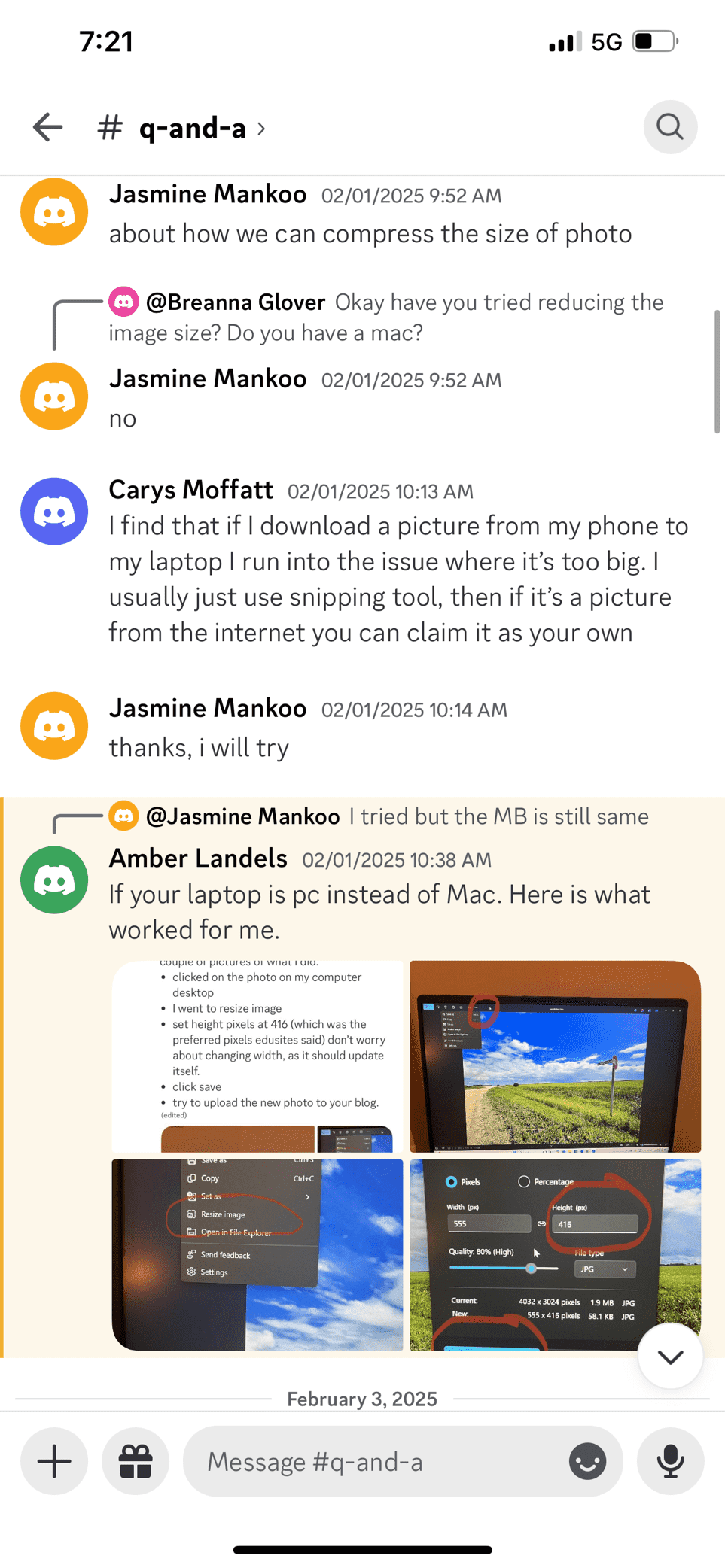

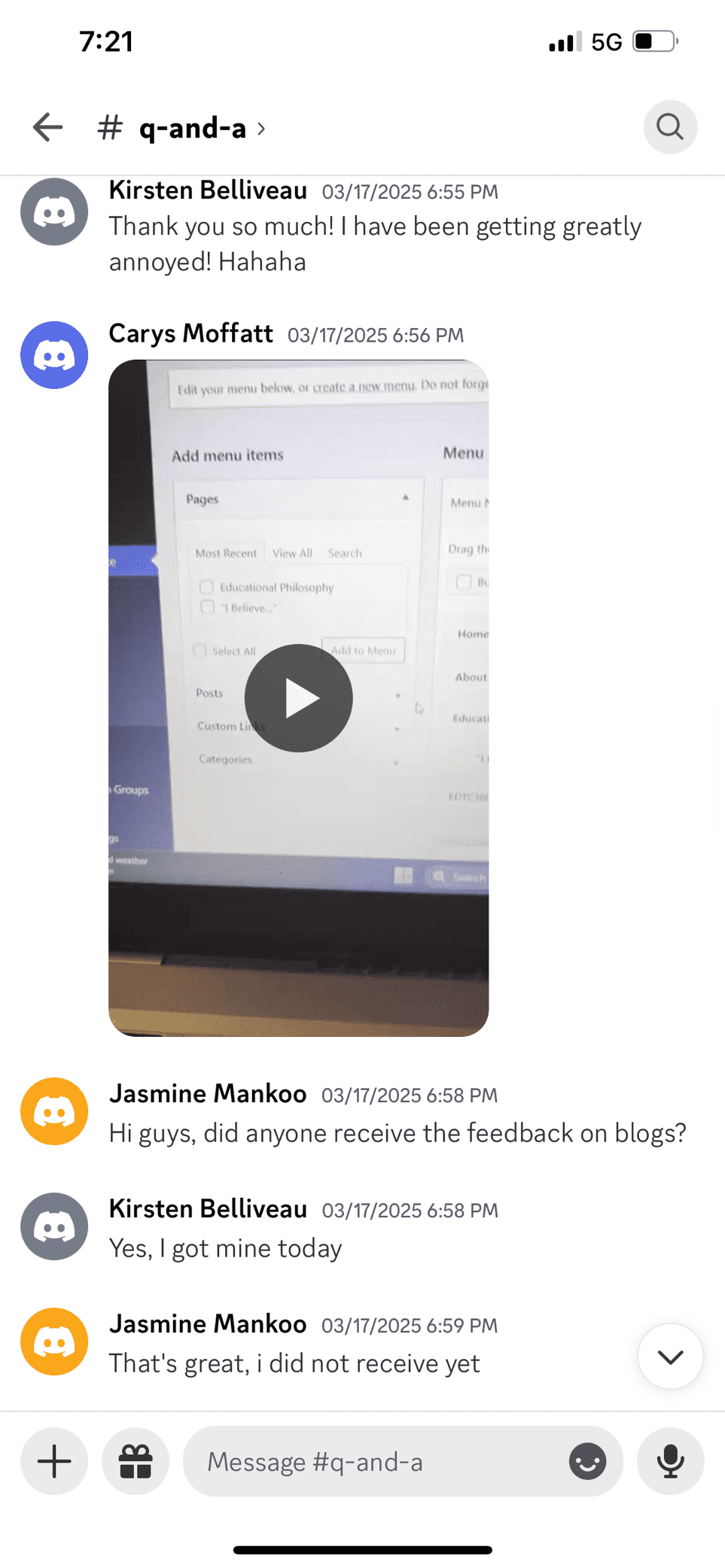
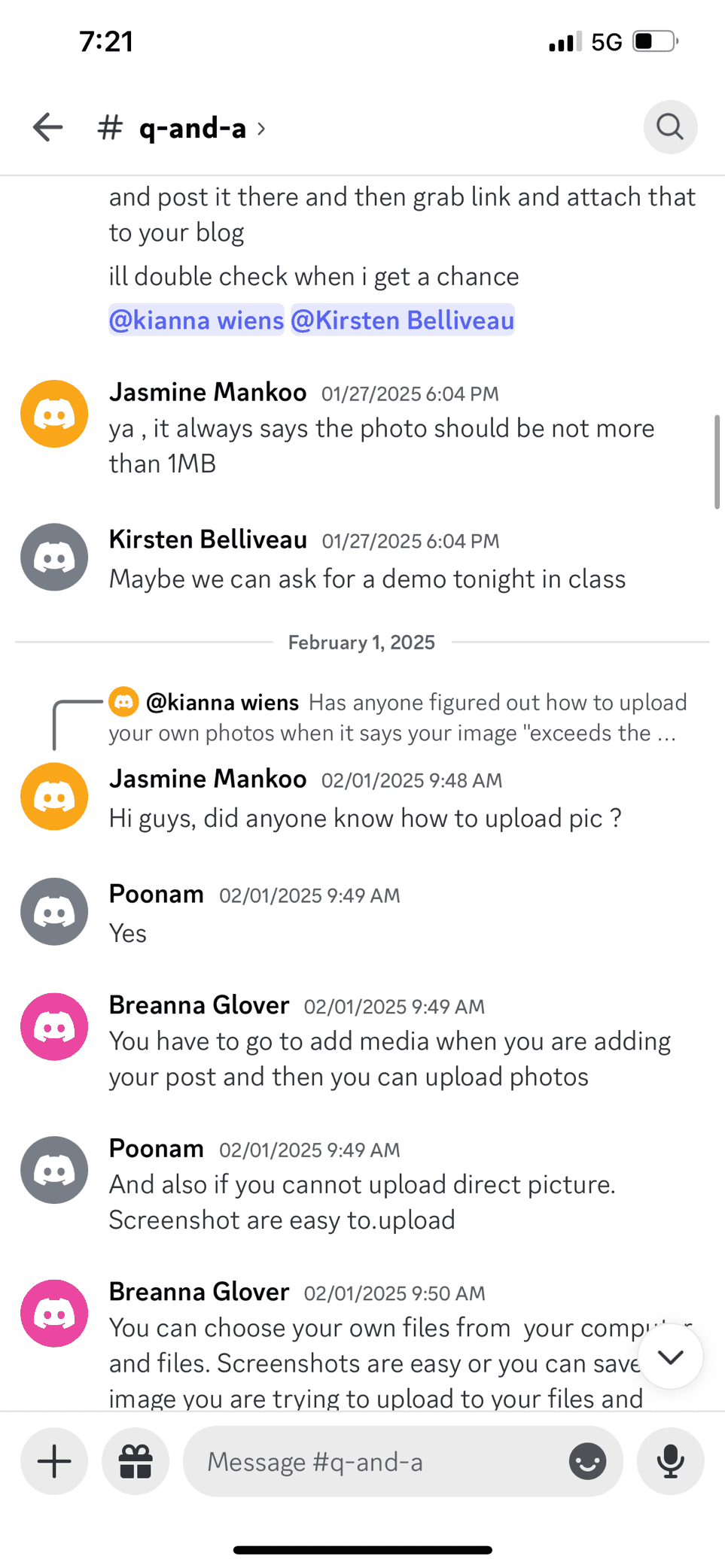
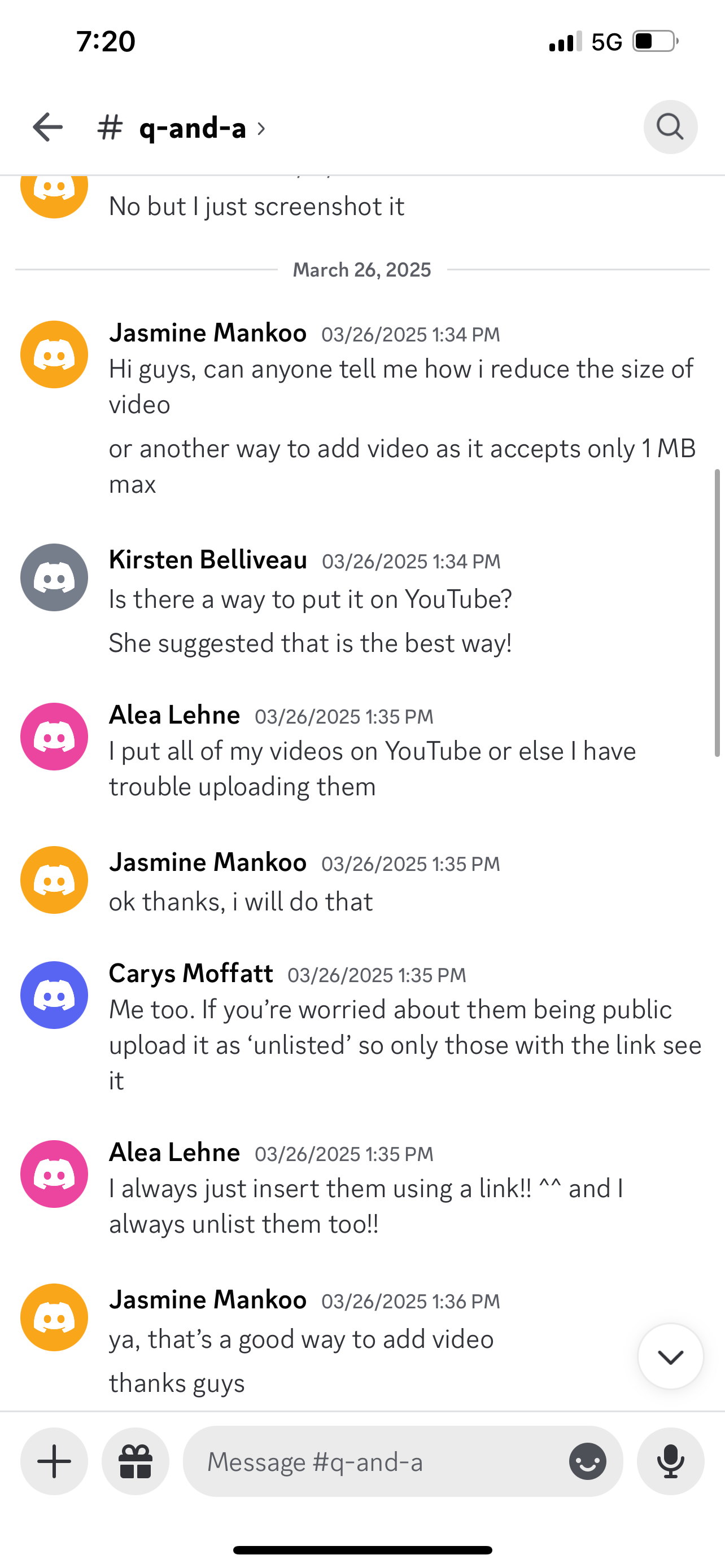
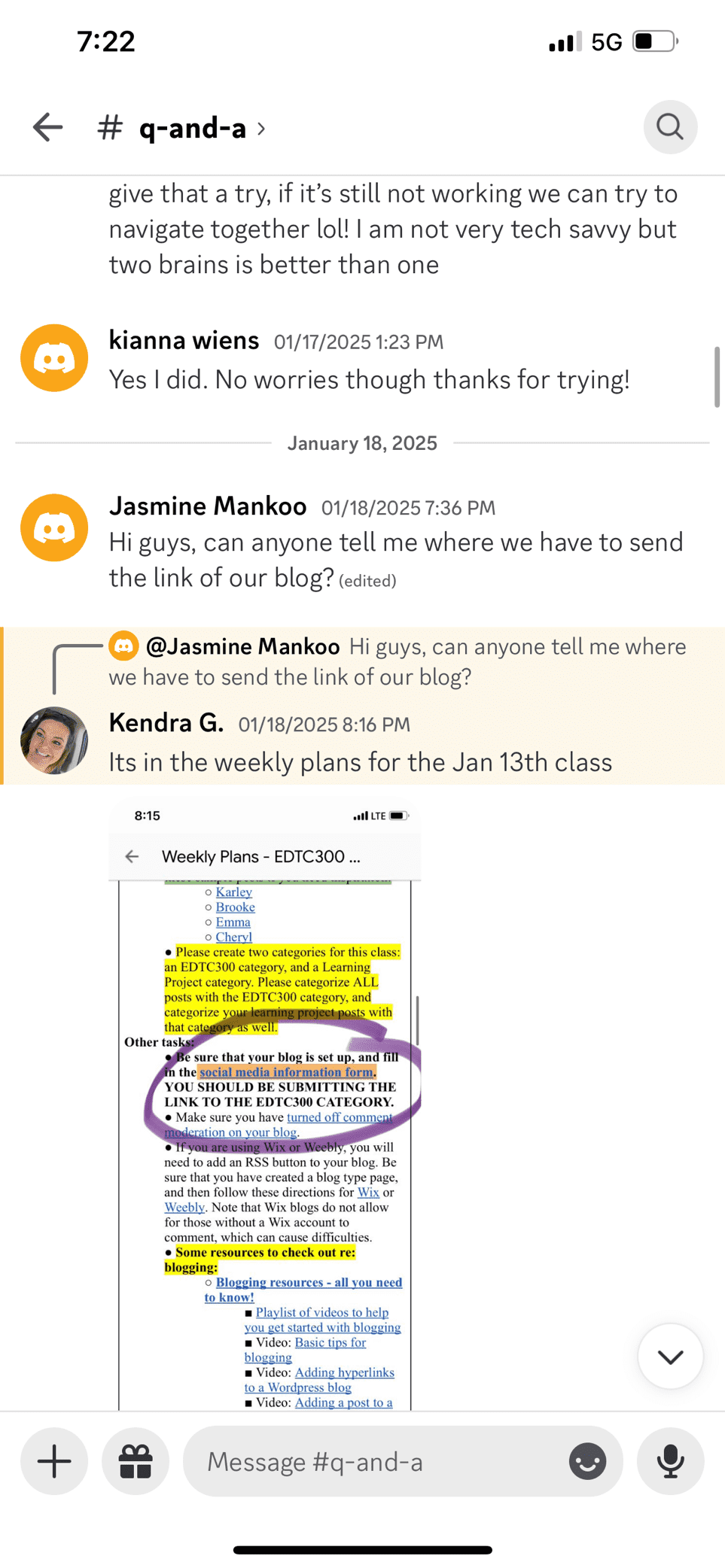

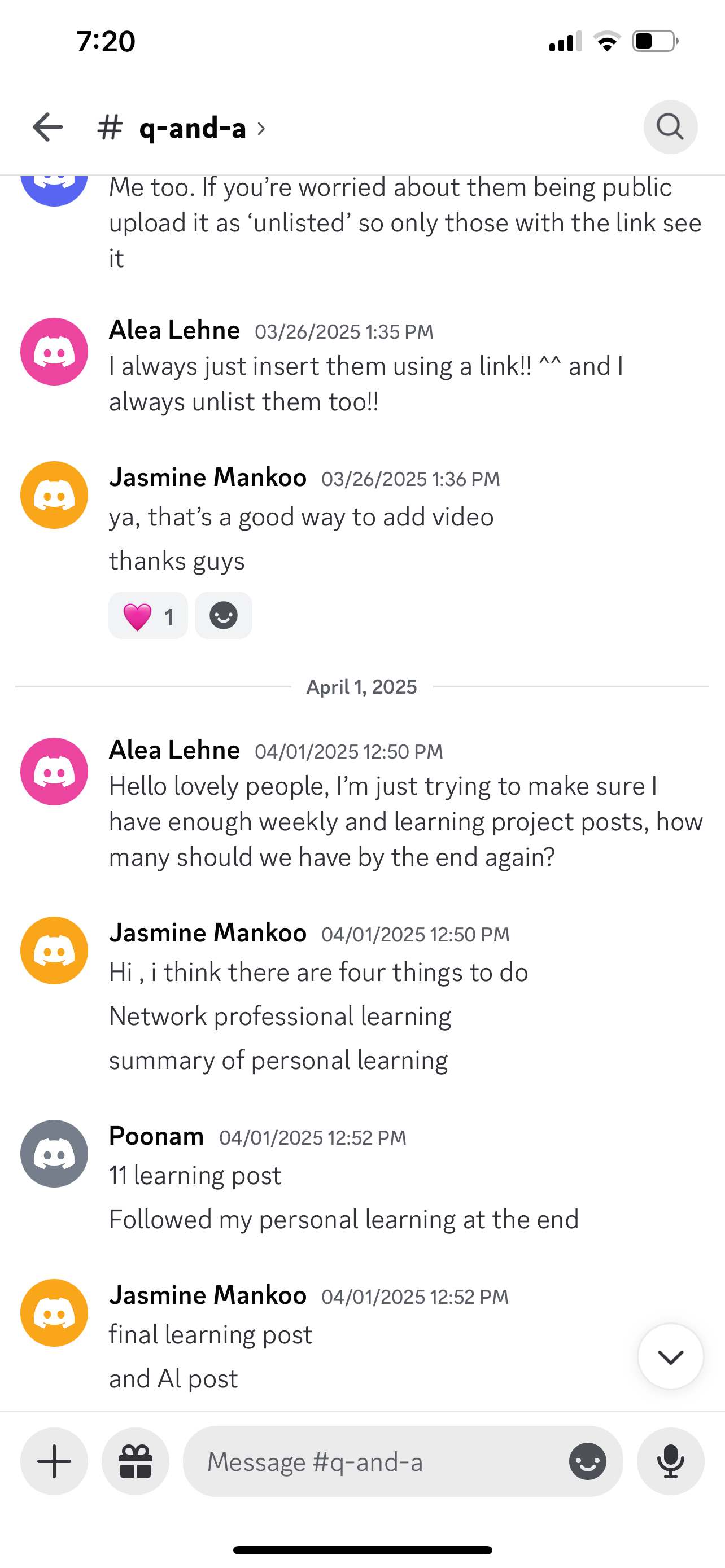
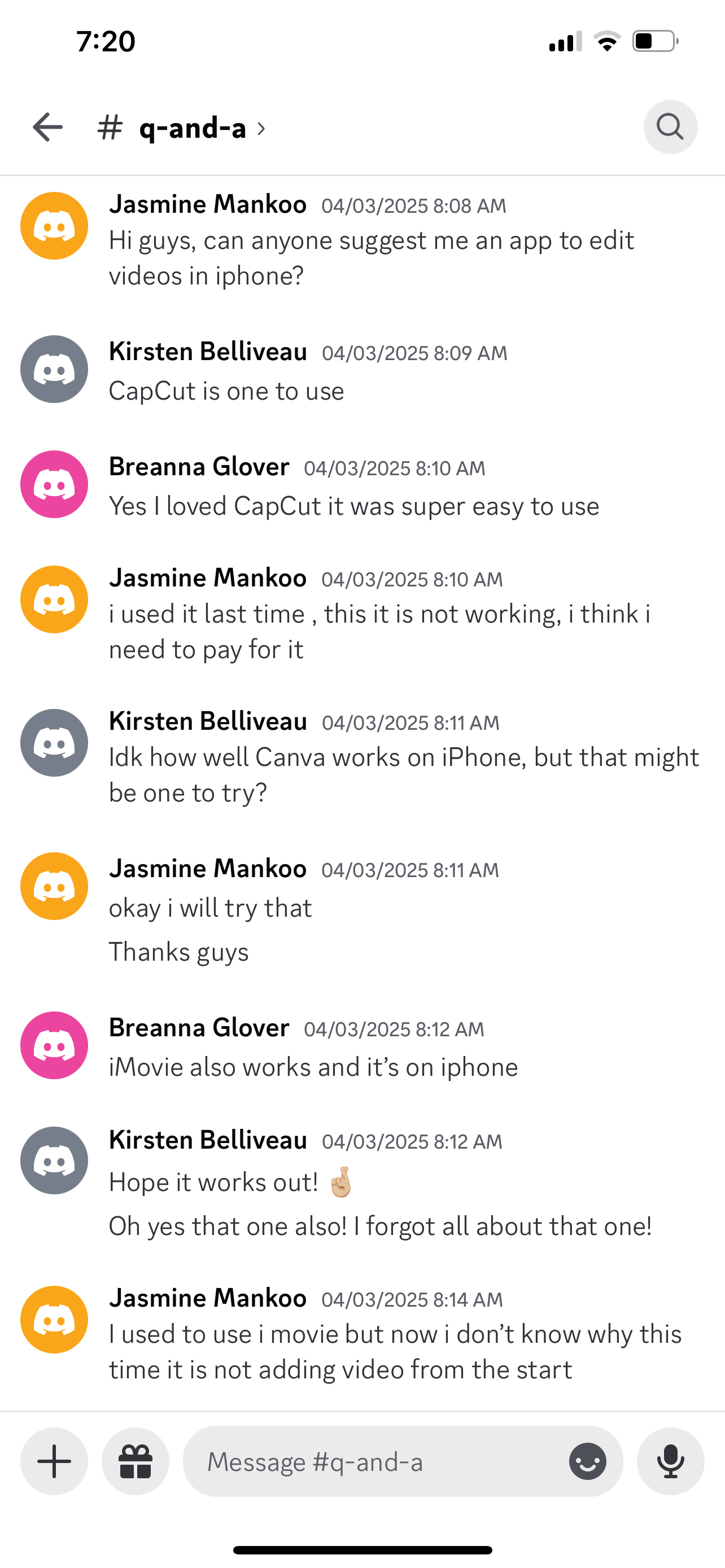
Whether it was solving a tech issue, suggesting a tool, or just showing up with encouragement, I tried to be a consistent and supportive presence for others in our online classroom.
Reflection
Helping others throughout this course helped me learn more deeply myself. By answering questions and offering feedback, I improved my own understanding. Most importantly, I’ve learned that being part of a learning community is about showing up for others — not just when it’s convenient, but when it’s meaningful. I’m proud of the connections I’ve made and the ways I’ve contributed.
Exploring Magic School AI: A Teacher’s Reflection
I explored Magic School AI, a tool designed specifically for educators. I hadn’t used it before, and after trying out a few of its features, I was impressed by its potential to support teaching and learning in creative and efficient ways.
What I Tried
Here are a few of the features I explored:
-
🎶 Song Generator: I started by giving it the topic “different seasons”, and within seconds, it created a catchy, age-appropriate song that could be used to introduce or review the concept in class. What made it even better was the option to generate a lesson plan around the song, including activities and follow-up questions. It also offered a downloadable Song Lesson Plan, which would be super handy for preparing handouts or saving for future use.
-
 📚 Vocabulary Builder: I entered five words and received definitions plus teaching activities to use with students.
📚 Vocabulary Builder: I entered five words and received definitions plus teaching activities to use with students.
-
🌍 Real-World Connections: I gave it a topic, and it generated meaningful examples to help students relate the concept to everyday life.

I also noticed useful tools like rubric makers, behavior note generators, and email writing assistants, all of which could save teachers a lot of planning time.
How It Enhances Teaching
Magic School AI can:
-
✔ Support personalized learning by adapting tasks for student needs
-
✔ Automate administrative tasks like emails and rubrics
-
✔ Offer engaging learning experiences like songs, games, and real-world examples
Supporting All Learners
This tool supports different learning styles:
-
Visual and auditory learners benefit from songs and visuals
-
Kinesthetic learners benefit from the suggested activities
-
It also encourages critical thinking and creativity through storytelling and real-world problem solving
Ethical and Practical Considerations
While AI tools like this are helpful, there are a few things to keep in mind:
-
Use AI as a support, not a replacement for teacher expertise
-
Review content carefully to make sure it fits curriculum and age level
-
Be aware of student data privacy
My Perspective and the Future of AI in Education
I see tools like Magic School AI as a valuable teaching assistant great for saving time, boosting creativity, and helping meet the needs of all learners. It assists teachers to focus on deeper connections with students and instructional quality. Looking ahead, I believe AI will become a regular part of education. If used thoughtfully, it can help make learning more engaging, personalized, and efficient—for both students and teachers.
Magic School AI surprised me in the best way. I’ll definitely consider using it in the future to plan lessons, support students, and stay organized. It’s a fun and practical tool for 21st-century teaching!
Overcoming Challenges in Crocheting Sepals and Assembling My Rose
Crocheting flowers can be a beautiful but tricky process, especially when it comes to the sepals and assembly. This week, I found myself facing a bit of a challenge with the sepals after finishing the petals and leaves—it was harder than I had anticipated.
The Challenge of Crocheting the Sepals
I found crocheting the sepals to be the most difficult part of this project. I initially followed a video tutorial, but I struggled with the pattern. I tried several times, only to be left frustrated with the results. But then, I found a video that worked better for me. The steps were clearer, and the process finally clicked. I was so relieved and proud of myself for sticking with it!
Assembling the Rose: A Lesson in Patience
Once the sepals were done, I thought I was ready to assemble the flower. Here’s how I started:
-
Making the Stem – I wrapped yarn around a piece of wire to create a sturdy stem and attached the leaves at the base.
-
Attaching the First Petal – For the first petal, I decided to use hot glue to attach it. However, I noticed a white residue from the glue that didn’t look good, almost like a crust around the petal. I quickly realized that the glue wasn’t the best option, so I switched to stitching it with needle and yarn instead, which gave me much better control and a cleaner look.
-
Attaching the Other Petals – After attaching the first petal, I moved on to the rest of the petals. However, I soon realized I had forgotten to add the sepals! I was so focused on the petals that I missed this important step.
This is where I encountered the most frustration. Since I had already glued the first petal in place, I couldn’t simply remove it and add the sepals. Fortunately, I hadn’t glued the other petals, so I was able to deattach them and fix my mistake.
-
Fixing the Mistake – Since the first petal was glued, it couldn’t be removed easily, so I had to carefully unwrap the yarn and leaves from the stem. I added the sepals to the base of the petals, then rewrapped the yarn to form the stem once again. After that, I stitched the petals back into place.
Reflection on the Resources
This project taught me a valuable lesson in patience and adaptability. If I hadn’t been able to deattach the petals, I would have had a lot of difficulty adding the sepals. It also made me realize the importance of planning ahead—especially when it comes to assembling the flower! I’m glad I made the decision to stitch rather than glue, and while it took a bit longer, the results were worth it.
Crocheting a Rose: Bringing Floral Beauty to Life
This week, as I was scrolling through Instagram, I came across a stunning crocheted rose. Its intricate details and delicate shape immediately caught my eye, and I was struck with inspiration—why not try making one myself? 🌹 I’ve always admired the beauty of real roses, and the thought of recreating one with yarn excited me. This project would not only test my crochet skills but also give me the chance to experiment with new techniques and textures.
Starting with the Petals
The first step was to create the petals, which form the heart of the rose. I chose a deep red yarn to mimic the elegance of real roses. I started with a magic ring and worked 6 single crochets (sc) into it. In the second round, I increased each stitch, doubling the count to 12 stitches. I continued this pattern in the third round, reaching 18 stitches by evenly spacing out my increases.
To add variation and depth, I made three smaller petals using this pattern. For the next set of petals, I followed the same base pattern but added fourth additional round, increasing to 24 stitches. This created larger outer petals, giving the rose a natural, layered effect.
Crocheting the Leaves
No rose is complete without its lush green leaves. This part of the project introduced me to triple crochet stitches, which I had never tried before! Using a combination of single crochet, half-double crochet, double crochet, and triple crochet, I was able to shape the leaves with a natural curve.
To enhance their look and durability, I inserted thin floral wire inside the leaves. This not only made them more flexible but also allowed me to shape them in a way that looked more realistic. I loved how this small addition gave the leaves a professional touch!
Reflection on the Process
This project was incredibly rewarding! It pushed me to try new techniques, especially triple crochet for the leaves. I can’t wait to see the complete rose.
Reflection on Resources
One of the most important lessons I learned was the value of finding the right resources:
-
For shaping the petals, I followed a tutorial that was simple and visually clear. The video and step by step guidance helped me understand how to position each petal correctly.
-
For the leaves, I used a crochet blog that provided a detailed pattern, including stitch counts and diagrams. The combination of written instructions and images made it easy to follow.
My Hour of Code Experience with Code Monkey Blocks Jumper
Introduction
For my Hour of Code activity, I chose Code Monkey Blocks Jumper, a game -based coding challenge that teaches programming logic through block-based coding. The goal was to help a monkey reach a star by giving it movement commands and adjusting the game environment.
coding challenge that teaches programming logic through block-based coding. The goal was to help a monkey reach a star by giving it movement commands and adjusting the game environment.
My Progress & Challenges
I started with excitement, but I quickly realized that some exercises were trickier than expected!
- Exercise 7: I got stuck for a while. The instructions were there, but they weren’t entirely clear. After several attempts, I realized that changing the speed of the monkey helped me pass the level, even though speed adjustment wasn’t mentioned in the instructions.
-
Exercise 9: This one asked me to delete some tiles to create gaps. However, the instructions didn’t clearly explain how to remove them. After some trial and error, I discovered that using the eraser tool worked, and I was able to continue. These moments were frustrating, but I learned the importance of experimenting and problem-solving when coding.
What I Learned Coding requires patience and persistence. Even when instructions aren’t clear, trying different approaches helps.
Debugging is part of the process. Sometimes, what seems like an error is actually just an opportunity to tweak and improve the code.
Thinking outside the box can be useful. Adjusting the monkey’s speed wasn’t mentioned, but it ended up being the key to solving Exercise 7.
My Thoughts on Coding
I had so much fun doing this activity! Even though I got stuck a few times, I really enjoyed figuring out the puzzles and watching my monkey successfully reach the star. It felt rewarding every time I solved a tricky challenge.
Is Coding Important?
I believe coding is an important skill, even if you’re not planning to become a programmer. It teaches:
✔ Problem-solving – Figuring out errors and solutions.
✔ Logical thinking – Understanding how small steps lead to a final goal.
✔ Creativity – Finding different ways to solve a problem (like adjusting speed when it wasn’t in the instructions!).
My Achievement: Jumpy Ride! 🎉
I completed the Block Jumper mini-course and earned the Jumpy Ride achievement! 🎖️ It feels great to complete the challenge and see how much I’ve learned.
Conclusion
Despite the challenges, this experience was fun and rewarding! I learned that coding isn’t just about following instructions—it’s about experimenting, making mistakes, and improving. I’m glad I stuck with it, and I’d love to try more coding activities in the future.
Teaching Digital Literacy: Developing Critical Thinkers in the Digital Age
Crocheting a Floral Coaster: A New and Exciting Project
While having breakfast and sitting at the dining table, I was thinking about my next crochet project. Suddenly, I looked at the coaster in front of me and got an idea—why not crochet a coaster myself? I immediately searched YouTube for tutorials and found a beautiful floral coaster design that I liked. Excited by the idea, I decided to make the same one.
I started with a magic ring. I had made a magic ring before for my crochet snake plant, but this one was different. Instead of the method I previously used, this pattern required ten double crochets (DC) in the ring. Each round had a different number of increases in single crochet (SC), which I initially found confusing. However, after watching the video multiple times and carefully following the pattern, I was finally able to get it right.
For the flower, I used violet-colored yarn to make the sepals and petals, while for the stem, I chose green yarn. This was my first time crocheting flowers, and I learned how to shape them using double crochet stitches.
This time, instead of posting pictures, I made a short video using the CapCut app, which is pretty easy to use, It offers features like trimming, adding text, filters, transitions, music, and effects .I created this video using this app within seconds. You can even hear the background noise of my baby since he was right there while I was making video.
Reflection on My Learning Experience
At first, I felt a bit nervous, wondering whether I would be able to complete the coaster successfully. However, as the project started taking shape, my confidence grew. To my surprise, the final result turned out exactly like the one shown in the tutorial. It was a really fun experience to make a flower for the first time—especially because I love flowers! I was super excited about crocheting the petal details. Although I found the petals a bit difficult to make at first, after retrying them a few times, I got the pattern right. Completing this coaster boosted my confidence in crochet, and I feel more comfortable trying out new patterns.
Reflection on the YouTube Tutorial
I really liked how the tutorial explained everything from start to finish. Each time the instructor completed a round, she showed the stitches and counted them to ensure they were correct. This made it much easier to follow the pattern accurately. Additionally, she demonstrated the detailed pattern for the petals, sepals, and stem, which was very helpful.
One thing that confused me was the subtitles. The pattern for each round was shown in the text, but instead of writing the number of single crochets (SC) required, the tutorial used “DC” (double crochet) in the instructions. This was misleading at first, but after carefully observing the video, I realized the correct pattern. Despite this small confusion, the tutorial was incredibly helpful in guiding me through the process.
Final Thoughts
This project was a great learning experience. Not only did I gain confidence in my crochet skills, but I also discovered how much I enjoy making floral designs. I’m looking forward to trying more crochet projects, and maybe even experimenting with different flower patterns in the future!
💬 What do you think I should try making for my next crochet project? Let me know in the comments!


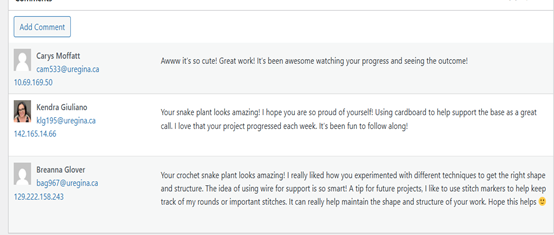



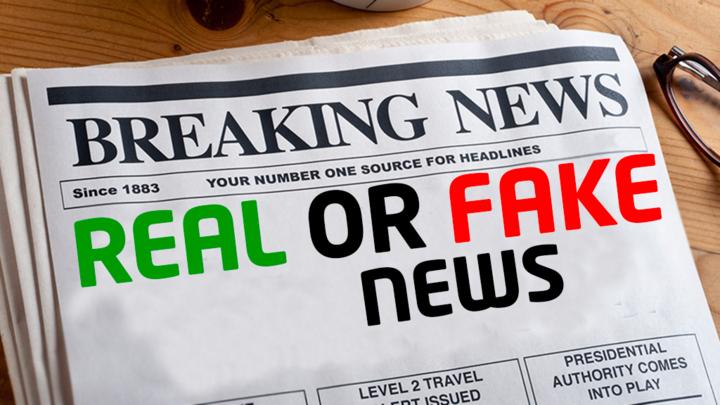 evaluation, media bias analysis, and fact-checking exercises. Another effective way to do this is through a news comparison activity, where students can analyze multiple articles or news at the same event.
evaluation, media bias analysis, and fact-checking exercises. Another effective way to do this is through a news comparison activity, where students can analyze multiple articles or news at the same event. 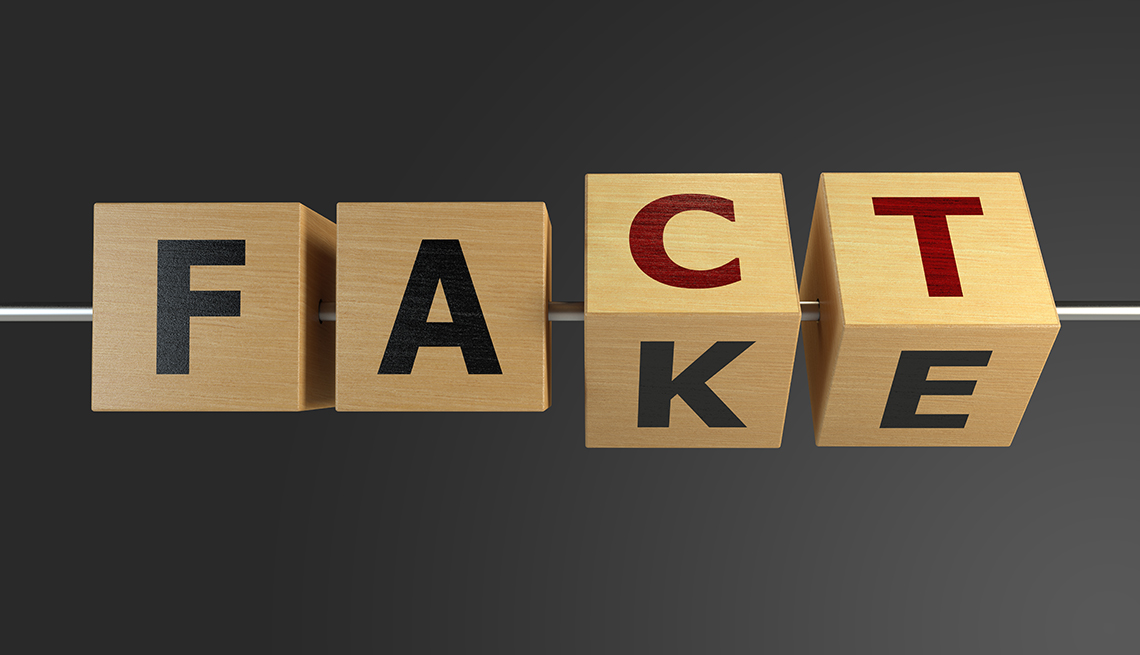 sources, asking probing questions, and comprehending how algorithms influence online experiences. Comparing social media algorithms and how they affect the information people view online is one method to include these tactics. This has a direct bearing on the
sources, asking probing questions, and comprehending how algorithms influence online experiences. Comparing social media algorithms and how they affect the information people view online is one method to include these tactics. This has a direct bearing on the 
 follow us for the rest of our lives. A frustrated post or a mistake from years ago may reappear and impact relationships, employment prospects, and college admissions. This raises the question: Should people be able to remove specific elements of their digital history?
follow us for the rest of our lives. A frustrated post or a mistake from years ago may reappear and impact relationships, employment prospects, and college admissions. This raises the question: Should people be able to remove specific elements of their digital history? challenging the idea that the internet is a distinct universe. He criticizes the propensity to view online behavior as “less real,” even when it has long-term repercussions. The “right to be forgotten” is a legal notion that permits anyone to request that outdated or harmful online information be removed. This is in keeping with the debate around this idea. Protecting people’s freedom to create their digital identities ought to be a fundamental right if we agree with Jurgenson’s contention that digital environments are inextricably linked to real life.
challenging the idea that the internet is a distinct universe. He criticizes the propensity to view online behavior as “less real,” even when it has long-term repercussions. The “right to be forgotten” is a legal notion that permits anyone to request that outdated or harmful online information be removed. This is in keeping with the debate around this idea. Protecting people’s freedom to create their digital identities ought to be a fundamental right if we agree with Jurgenson’s contention that digital environments are inextricably linked to real life.